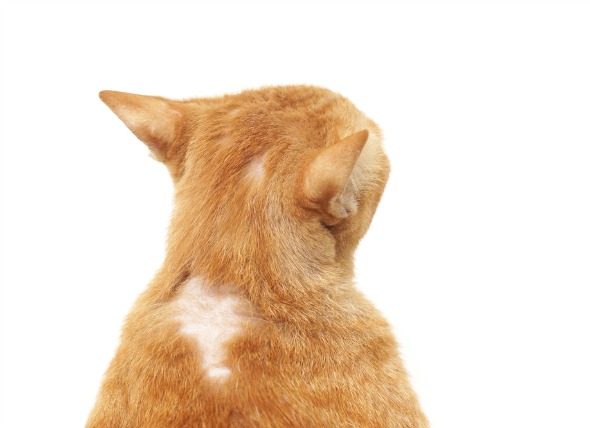
 The brown recluse spider is a member of the genus Loxosceles reclusa. It is generally found in the Midwest section of the U.S. - west to Colorado and New Mexico, and east to Northern Georgia, and throughout the southern U.S. and up the Mississippi River valley to southern Wisconsin. The brown recluse is also known as the “fiddle-back,” or “violin” spider on account of the violin-shaped pattern on its cephalothorax (the upper portion of the body where the legs connect), with the neck of the “fiddle” extending toward the tail. Not all recluses have this marking. For example, young brown recluse's often do not. Generally, this is an accurate method for recognizing them. It can also be distinguished by its pattern of six eyes, rather than three, and a lack of any other patterning on its body, There are no marking on the abdomen or legs, only on the cephalothorax. It measures about 8–15 mm in body size, with longish legs around 2–3 cm long.
The brown recluse spider is a member of the genus Loxosceles reclusa. It is generally found in the Midwest section of the U.S. - west to Colorado and New Mexico, and east to Northern Georgia, and throughout the southern U.S. and up the Mississippi River valley to southern Wisconsin. The brown recluse is also known as the “fiddle-back,” or “violin” spider on account of the violin-shaped pattern on its cephalothorax (the upper portion of the body where the legs connect), with the neck of the “fiddle” extending toward the tail. Not all recluses have this marking. For example, young brown recluse's often do not. Generally, this is an accurate method for recognizing them. It can also be distinguished by its pattern of six eyes, rather than three, and a lack of any other patterning on its body, There are no marking on the abdomen or legs, only on the cephalothorax. It measures about 8–15 mm in body size, with longish legs around 2–3 cm long.
As the name suggests, the brown recluse is a reclusive, non-aggressive spider, preferring dark and uninhabited spaces away from humans and animals. They are active at night. Bites usually occur when the spider becomes trapped in bedding while it is out prowling, and an animal or human rolls over on the spider. It also tends to occur when an animal unintentionally disturbs the spider in its space.
The bite from a recluse can be classified by its necrotizing nature. Reaction typically occurs at the site of the bite, with an ulcerated necrotic wound that results in the death of the surrounding soft tissue. The wound is slow to heal, leaving an open wound that is at risk of further infection. Serious complications occur when the ulcer progresses to gangrene, or when the venom enters the blood stream and is carried to the internal organs. Destruction of red cells, renal failure, coagulation disruption, and death are all possible known complications of a recluse bite. These complications are rare but have been known to occur.
Cats may be at higher risk because of their tendency to crawl into small dark space. If you live in an area that is known for being populated with brown recluse spiders, and your cat has a wound with symptoms that are similar to those described here, you may want to ask your doctor to test your cat specifically for the presence of brown recluse venom.
Brown recluse spider bite.
You will need to give a thorough history of your cat's health and onset of symptoms. The bite from a brown recluse can mimic other types of wounds, so your veterinarian will look for a wide range of possible causes for the symptoms unless you saw the spider that bit your pet. As part of a standard examination, a blood profile will be conducted, including a chemical blood profile, a complete blood count, and a urinalysis. A blood test will reveal much of the information your doctor needs to make an accurate diagnosis. A coagulation profile may also be conducted to check your cat's blood clotting ability. If you live in an area that is known for having brown recluse spiders, you might ask your doctor to check for the presence of venom in your cat's blood stream. An enzyme linked immunosorbent assay, or ELISA test can be used to detect the venom, but this is not commonly used unless a brown recluse bite is specifically suspected.
The venom from a brown recluse has the potential to cause serious harm. In some cases, the necrotizing spreads, causing tissue death to the degree that the entire limb will need to be removed. The faster this is diagnosed, the better chance you will have of preventing complications.
Your veterinarian will recommend routine wound care unless your cat is extremely ill, in which case, intravenous therapy provided in a hospital setting will be necessary. Your cat may also need blood transfusions so that the body can send fresh blood to the wounded area. If the venom is mild, cold compresses are sometimes adequate for reducing inflammation and reducing pain. If there has been a lot of cell destruction at the wound site, your doctor will need to surgically remove some of the dead tissue. If the venom was very potent, with a lot of cellular and tissue damage, your cat may need skin grafting after the lesion reaches full maturity.
 Low Platelet Count in Cats
Thrombocytopenia in Cats
An abnormally low produc
Low Platelet Count in Cats
Thrombocytopenia in Cats
An abnormally low produc
 Protozoan Infection (Trichomoniasis) in Cats
Trichomoniasisin Cats
The protozoa are single-cel
Protozoan Infection (Trichomoniasis) in Cats
Trichomoniasisin Cats
The protozoa are single-cel
 Hair Loss in Cats
Alopecia
Hair loss (alopecia) is a common problem
Hair Loss in Cats
Alopecia
Hair loss (alopecia) is a common problem
 Dark Spots on the Eye in Cats
Corneal Sequestrum in Cats
Corneal sequestrum occ
Dark Spots on the Eye in Cats
Corneal Sequestrum in Cats
Corneal sequestrum occ
 Ingestion of Feces and Foreign Objects in Cats
Coprophagia and Pica in Cats
Pica is a med
Ingestion of Feces and Foreign Objects in Cats
Coprophagia and Pica in Cats
Pica is a med
Copyright © 2005-2016 Pet Information All Rights Reserved
Contact us: www162date@outlook.com